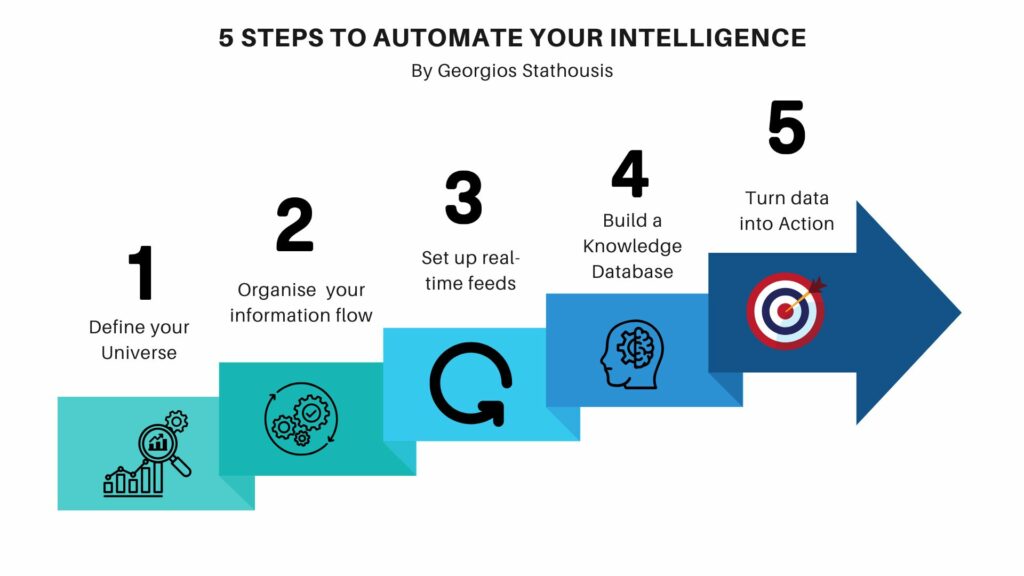Table of Contents
Automated Intelligence brings the power of real-time data feeds with predictive personalisation to turn data into actions
Generative AI and LLMs like ChatGPT are revolutionising how we search and analyze information. But, be aware of hallucinations.
What’s more, real-time data feeds are becoming more accessible.
As the volume of information we consume increases, removing the noise and bias to turn data into action becomes crucial.
Let’s take the example of monitoring technology innovation to bring advancements to new products.
- Conventional innovation scouting relies on periodic updates and static data, which could result in missed opportunities or delayed responses to key technology and strategic shifts.
- Using real-time automated intelligence, you can respond faster to changing market demands to innovate and capitalize on emerging opportunities.
That’s why, now is the best time to start building your automated intelligence.
Here is how you can do it in 5 simple steps.

Decide what you want to track
- Define your universe of scope, taxonomies, players, or markets.
- Consider a balance between volume (miss nothing) and noise (irrelevant)
My tip: follow a multi-channel approach, e.g., different social media depending on the depth of information you need and a good mix of industry media vs. content creators.
Think ahead about how to organise the information you collect
You can build workflow automation with Zapier or Airtable and other no-code tools to automatically extract data from your email and organise them into the desired format.
If you are tracking data from different sources, e.g., forecasts or sales, consider using VBA to consolidate data from workbooks in Excel.
Set up real-time data feeds, ideally with APIs
Use Google Alerts to get notified as things unfold. Or set up a weekly summary.
Another alternative is to use prompts in ChatGPT.
Follow industry newsletters, media, or experts on Linkedin.
For even better results, select a data provider that offers news APIs.
Build your Knowledge Database and chat with the data
Don’t forget to integrate your data into the mix to increase personalisation.
Create a Knowledge Database containing industry reports, video/audio, and other sources in Perplexity. Then use prompts to dig deeper and analyse the information.
Identify tasks that are repetitive and time-consuming and write prompts to make the process faster. For example, if you want to analyse 10 competitors, write down the exact steps you’ll need to analyse the first company, turn them into prompts and then repeat for the remaining companies.
The advantage of using Generative AI on your data is that it learns from “controlled sources” and can provide more relevant better results.
Set up methodologies to turn data into action
That’s probably the hardest part because I don’t think there is one solution fits all. But it’s also the most rewarding since you can make data-driven decisions.
- Strategy and competitor intelligence teams can forecast sales, revenues, or market adoption with scenario-building and predictive analytics frameworks.
- Innovation or investment teams scout for opportunities with high market potential and technology readiness.
That’s a wrap! Five steps to build automated intelligence using no-code and mostly free tools.
PS: If you are struggling to find innovation opportunities or strategic intelligence check this tool: Current.
See you next time!
Georgios

